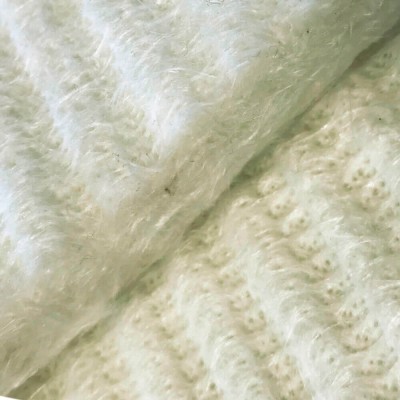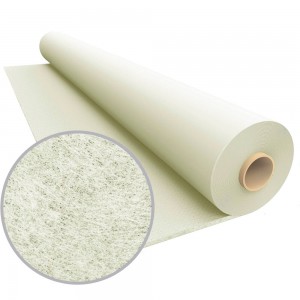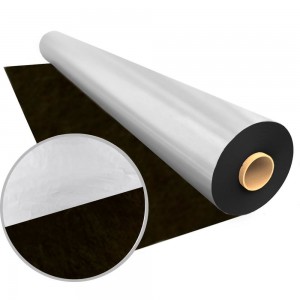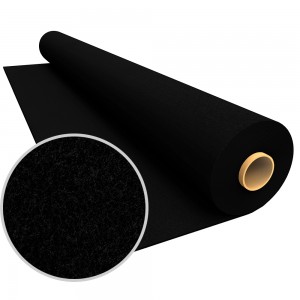INSULATING MAT NT FIBERGLASS 3300
THERMAL INSULATING FIBERGLASS MAT
Texfire’s NT FIBERGLASS 3300 non-woven fabric is an E-glass fiberglass fibre-bonded mat or plush. It’s 25 mm (+-5) thick and it has a grammage of 330 gr/m2. This plush resists continuous working temperatures up to 500ºC, offering an optimal thermal insulation thanks to its density of 130 kg/m³. In addition to being an excellent thermal barrier, it’s also effective as an acoustic barrier as well.
NT FIBERGLASS 3300 is mainly used in the confection of textile insulators like: laggings, strips or expansion joints, thermal mats, quilts, etc. Due to its own construction as a fibre-bonded non-woven, it’s always used in the internal layers of multi-layered combinations, avoiding this way that fibers are released. Because of its physical features, it’s a good thermal insulator and performs as an excellent thermal barrier or “heat blocker”.
NT fiberglass 3300 has been submitted to different tests in internal laboratories, obtaining the following results: ISO 15025 - Test method to limited flame spreading – A1-A2 result. ISO 9151 - Determination of heat transference when being exposed to a flame - with a B2 result. ISO 6942 - Evaluation of materials and sets of materials when exposed to a radiant heat source – C4 result.
FEATURES.
- Grammage 3.300 g/m2, thickness 25 mm (+-5), useful width 100 cm.
- Resists sustained temperatures of 500ºC during long periods.
- Free of asbestos and toxic gases.
- Density of 130 kg/m³.
- Thermal and acoustic insulator.
- Light and malleable.
- Fibre-bonded structure, low resistance to traction.
- Inherent fire resistant, does not burn, nor melt or leaks.
- Intrinsic features of the fibers, don’t decrease over time, does not expire.
Data sheet
- Convective heat
- ISO 9151 | B2
- Radiant heat
- ISO 6942 | C4
- Fire reaction
- NF P 92503 | M1 CLASS
- Flame propagation
- ISO 15025 | A1 - A2
- Heat resistance
- ISO 17493 | 260 ºC : PASS
APPLICATIONS.
- Thermal mat filling.
- Laggings.
- Flame retardant acoustic panels.
- Thermal case.
SECTORS.
- Petrochemical.
- Food industry.
- Tapestries and flame retardant linings.
- Metal foundries.
- Automotive and transports.
- Construction.
- Naval industry.
- Glass foundry sector.
USE RECOMMENDATIONS.
Non-woven structures tend to release fibers that can irritate eyes, nose, throat and skin. A skin rash can appear when fibers are embedded in the skin’s external layer. But long-term effects to health shouldn’t be produced when touching the fiberglass. There is no evidence that fiberglass causes cancer in people.
Handling and caution indications for fiberglass and silica fiber non-woven fabrics.
- It is recommended to handle it in an area isolated from the rest to avoid a possible contamination of fibers and dust. It is important to have an extraction system, vents or vacuuming in the room to avoid fiber and dust accumulation.
- Use long-sleeve clothes and protection gloves in order to avoid contact and skin irritation.
- Use a mask covering nose and mouth to avoid fiber inhalation.
- Use safety glasses with lateral protectors to protect eyes.
- In case of irritation by contact with fiberglass or silica fibers, eyes must be washed with water and any area of the exposed skin must be washed with soap and warm water to erase the fibers.
- Garments used during work with fiberglass and silica fiber must be removed carefully and washed separately from other clothes.







